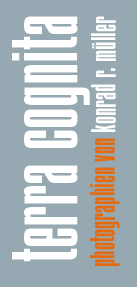
 |
|
Terra
cognita Konrad R. Müller's photographs have left their indelible mark on the public image of all German chancellors from Konrad Adenauer to Gerhard Schröder. This year sees Müller's sixtieth birthday, and the German Historical Museum is celebrating the occasion with an overview of the work of this "photographer of chancellors", including hitherto unpublished pictures. Konrad R. Müller began to study painting in his home town at the Berlin University of the Arts, but left after only a few semesters to move to Bonn with his father's 1935 camera. He was deeply impressed by the face of Konrad Adenauer and had painted portraits of him from press photographs as a young art student. In the autumn of 1965 he created his first photo portraits. But it was not until nearly ten years later that Konrad R. Müller's fascination for the "the old man", as Adenauer was known, became his profession. Müller first won broader recognition with his photographs of Willy Brandt and with his 1978 book of pictures of Brandt. Since then his impressive portraits, which are created away from the hurly-burly world of press photography, have gained a remarkable reputation. Müller never uses artificial lighting and never works in a studio. Natural surroundings are paramount. Many of his photographs of politicians were therefore taken in the countryside, far from the trappings of power. Over the following years Konrad R. Müller produced several series of photographs and photo books on statesmen such as François Mitterrand, Anwar el Sadat and Bruno Kreisky, with whom he had come into contact through his work with the German heads of government. Müller's public image as the "photographer of chancellors", presented in newspapers and magazines, has led to an imbalance in our appreciation of his work. Over many years Müller has produced still lives, landscapes, images of outsiders and sensitive portraits of well-known figures from the world of literature, theatre and music. Whether the subjects are politicians, writers, actors, musicians or just unknowns, Müller always manages to establish a personal relationship. This closeness and the ability to wait for the right moment are the trademarks of Müller's method. After the photographs have been taken, and the sketches of light have been made, Müller's creative work of choosing the right negative begins. This negative then becomes the basis for further work in the darkroom, which is more like a printer's workshop than a mere place for the reproduction of images. Müller never makes more than one unique print of each photograph. This exhibition contrasts the "terra cognita", the "landscape of the faces" of famous people, with a "terra incognita", including hitherto unpublished pictures of malformed foetuses from the museum of medical history at the Berlin Charité hospital.
|
|
|

